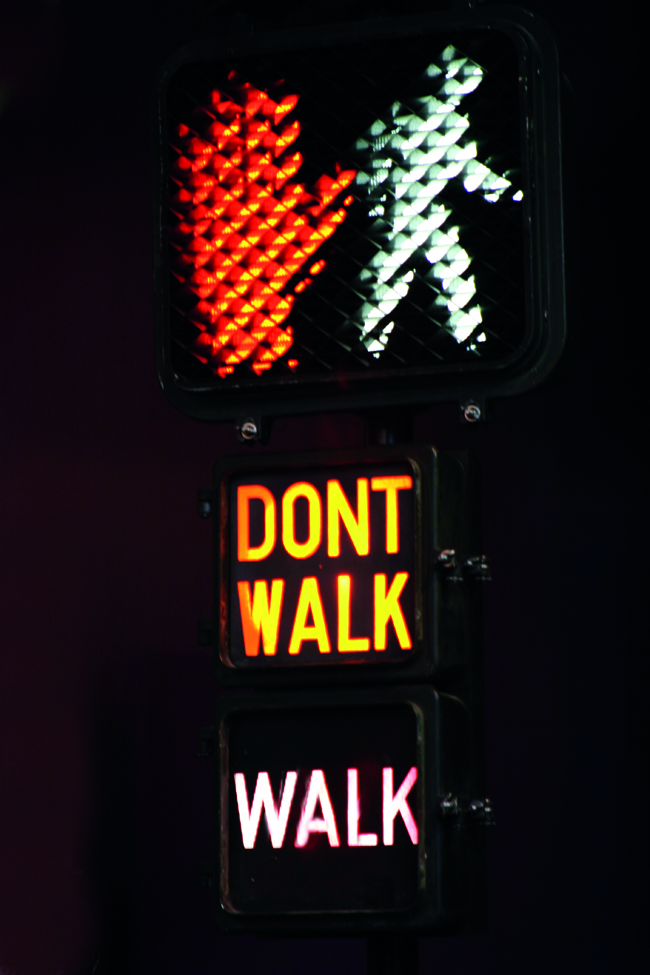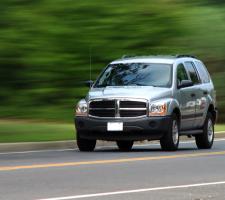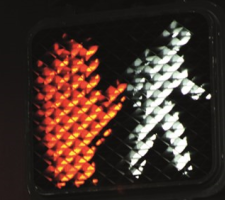
Pedestrian deaths across the US have risen to their highest number in nearly 30 years. Many factors are responsible - including the rise and rise of SUVs - according to a worrying new GHSA report
More pedestrians died on US roads last year than in any year since 1990. The
The report, Pedestrian Traffic Fatalities by State: 2018 Preliminary Data, is researched and written by Richard Retting of Sam Schwartz Consulting. It suggests a number of factors behind the alarming rise in fatalities: these include unsafe behaviour such as distracted driving due to smartphone use and road designs which do not take enough account of people walking alongside and across them. “Challenging crossing locations such as multi-lane urban arterials often have bus stops or land use patterns that require pedestrians to cross busy roads,” the report says.
There is also the question of the changing buying habits of US drivers, in particular the increased presence of sport utility vehicles (SUVs) on the roads. This is significant because pedestrian deaths in incidents with SUVs have risen by 50% since 2013, compared with 30% for passenger cars. And although passenger cars remain the largest category of vehicles involved in fatal pedestrian crashes, you are twice as likely to die if you are struck by an SUV. “The increasing shift in US vehicle sales away from passenger cars to light trucks (with light trucks generally causing more severe pedestrian impacts than cars) is also a factor,” the report says.
Dark rising
Darkness is also important: from 2008 to 2017 the number of night-time pedestrian fatalities increased by 45% - versus an 11% rise in daytime deaths.
The majority of deaths – 60% of them – happen on local streets and state highways. And although there is a great deal of interest in the ITS industry for making intersections as safe as possible through technology, it is instructive that most pedestrian fatalities occur at non-intersection locations. “Although it is impossible to make all non-intersection locations safe or suitable for pedestrian activity, there are opportunities to improve pedestrian safety at midblock locations through speed enforcement and management along with increased street lighting,” the report points out.
Pennsylvania law enforcement conduct targeted enforcement stings for motorists who fail to yield to pedestrians on crosswalks, it adds. Meanwhile, the report found targeted enforcement in Maine “which serves to increase compliance with appropriate traffic laws by both pedestrians and motorists”. Traffic enforcement focused on the high pedestrian-motor vehicle crash locations across the State of Maine based on the past three years of data.
In Texas, infrastructure changes include creating safer places to walk along a roadway such as complete sidewalk networks, and safer places to cross, including pedestrian hybrid beacons for mid-block crosswalks.
Alcohol impairment
There is another major factor. Whatever we think when slightly drunk, the evidence is clear that booze remains incompatible with safety: alcohol impairment is a major factor in deadly incidents – although not just when it comes to the drivers. The report suggests an estimated 32% of fatal pedestrian crashes involved a pedestrian with a blood alcohol concentration (BAC) of 0.08 or higher, and an estimated 17% of drivers involved in these crashes had a BAC of 0.08 or more.
On a state-by-state basis across the US, a comparison between the first half of 2018 and the same period in 2017 showed that 25 states (plus the District of Columbia) saw a rise in pedestrian deaths, while 23 reported falls and two remained the same.
The GHSA extrapolated its headline number of 6,227 deaths from figures for the first half of the year, adjusting for anticipated underreporting and bearing in mind historic trends in pedestrian fatalities during the first and second halves of the year. The figures for 2018 suggest the continuation of a worrying trend – albeit at a slower rate. From 2008-17, the number of pedestrian fatalities increased by 35% from 4,414 deaths to 5,977. This would be bad enough without the next statistic: that over the same period, the combined number of all other traffic deaths declined by 6%.
There may also be a demographic link. Arizona, Colorado, Florida, Idaho, North Carolina, Nevada, South Carolina, Utah, Texas and Washington State are the 10 states with the highest population growth from 2017-18; they saw an overall 5% increase in the number of pedestrian fatalities during the first half of last year compared with the same period in 2017.
Bright spots
It is not all gloom: bright spots in the data include a 15% fall in pedestrian fatalities in the 10 largest US cities from 2016 to 2017 – which the report says “might be attributable in part to aggressive traffic safety initiatives such as Vision Zero, which has a principal aim of reducing the number of pedestrian and bicyclist fatalities, with the long-term goal of bringing these numbers to zero”. The decline was “especially sharp in New York City, providing evidence of local successes that may not be reflected in state-wide data”.
Also, deaths during the first half of 2018 declined in 23 states compared with the same period in 2017, with six of them (Alabama, Indiana, Michigan, Nevada, Oklahoma and Wisconsin) reporting double-digit declines in both the number and percentage change in pedestrian fatalities from the same period in 2017.
In three states (Iowa, New Hampshire and Utah) there have now been two consecutive years of falling fatalities.
There are also a variety of things that can be done. Better enforcement, of course, plus use of simple infrastructure such as traffic refuge islands for pedestrians who are crossing roads. Vehicle manufacturers are called on to play their part too. “Design changes such as softer vehicle fronts, pedestrian detection systems, and replacing the blunt front ends of light trucks with sloping, more aerodynamic (car-like) designs can reduce the risk of pedestrian deaths in the event of a crash,” the report suggests. “In the short-run, local efforts to reduce speed limits and speeding in pedestrian zones can help reduce the severity of light truck-pedestrian crashes.” ITS
The full report can be downloaded at <%$Linker:
Ohio intervention
ODoT’s Driver’s Education Programme provides materials emphasising laws aimed at pedestrian safety, while best practices – including enforcement strategies - for biking and walking safety are shared. The Safe Routes to School initiative provides $4 million annually to communities looking to improve the safety for students to walk or bike to school.
The Transportation Alternatives programme provided $27 million for projects in 2018, many supporting bicycle and pedestrian facilities, while the Highway Safety Improvement Programme offers funding for improving roadway safety, including pedestrian projects.
The counties of Butler, Franklin and Hamilton (which represent 28% of state-wide pedestrian fatalities) have proposed pedestrian activities in their grants to address specific issues.
Source: GHSA’s Pedestrian Traffic Fatalities by State: 2018 Preliminary Data
US pedestrian deaths: state by state
Figures from GHSA’s Pedestrian Traffic Fatalities by State: 2018 Preliminary Data show that deaths range widely as you head across each state.
For example, the estimated number of pedestrian deaths for the first six months of 2018 ranged from just one in New Hampshire to 432 in California.
California, Florida, Texas, Georgia, Arizona, New York and North Carolina are each expected to have more than 100 pedestrian deaths – an increase of two states from 2017.
Five states (Arizona, California, Florida, Georgia and Texas) accounted for 46% of all pedestrian deaths between them.
New Mexico had the highest rate of pedestrian deaths per resident population, with New Hampshire the lowest.













